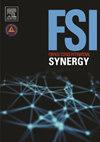司法科学中的透明报告:探索其意义和挑战
Q1 Social Sciences
引用次数: 0
摘要
法医学和科学界普遍认同透明度是法医学报告的核心原则和基本义务。然而,具有讽刺意味的是,透明度的定义仍然不透明。这种模糊性影响了科学家作为主要消费者向司法系统报告法医发现时履行义务的能力。运用艾略特的2022透明度分类法澄清了这个问题,揭示了透明度是实现可靠性、评估、公正、问责制和创新目标的核心。它涉及披露有关科学家的权威、遵从性、依据、论证、有效性、分歧和背景的信息,并表明这些披露的受众不仅包括主要消费者,还包括一系列代理人、行动者和利益相关者。这种复杂性给科学家和法医科学服务提供者带来了多方面的挑战,需要在相互竞争的需求之间取得谨慎的平衡。模板可以减轻其中的一些挑战,但必须与法医科学家、法律利益相关者和机构机构之间的持续合作相结合,以确保报告实践与专业义务、科学严谨性和法医实践的现实相一致。本文章由计算机程序翻译,如有差异,请以英文原文为准。
Transparent reporting in forensic Science: Exploring its meaning and challenges
The forensic and scientific communities widely endorse transparency as a core principle and fundamental obligation of forensic science reporting. Yet the definition of transparency - ironically – remains opaque. This ambiguity impacts scientist's ability to fulfill their obligations when reporting forensic findings to justice systems as the primary consumer. Applying Elliott's 2022 taxonomy of transparency clarifies the issue, revealing that transparency is central to achieving Reliability, Assessment, Justice, Accountability and Innovation goals. It involves disclosing information about the scientists' Authority, Compliance, Basis, Justification, Validity, Disagreements, and Context, and shows that the audiences for these disclosures includes not only primary consumers, but also a range of agents, actors, and stakeholders. This complexity creates a multidimensional challenge for scientists and forensic science service providers, requiring a careful balance between competing demands. Templates can mitigate some of these challenges, but must be coupled with ongoing collaboration among forensic scientists, legal stakeholders, and institutional bodies to ensure that reporting practices evolve in line with professional obligations, scientific rigor and the realities of forensic practice.
求助全文
通过发布文献求助,成功后即可免费获取论文全文。
去求助
来源期刊

Forensic Science International: Synergy
Social Sciences-Law
CiteScore
4.90
自引率
0.00%
发文量
75
审稿时长
90 days
 求助内容:
求助内容: 应助结果提醒方式:
应助结果提醒方式:


